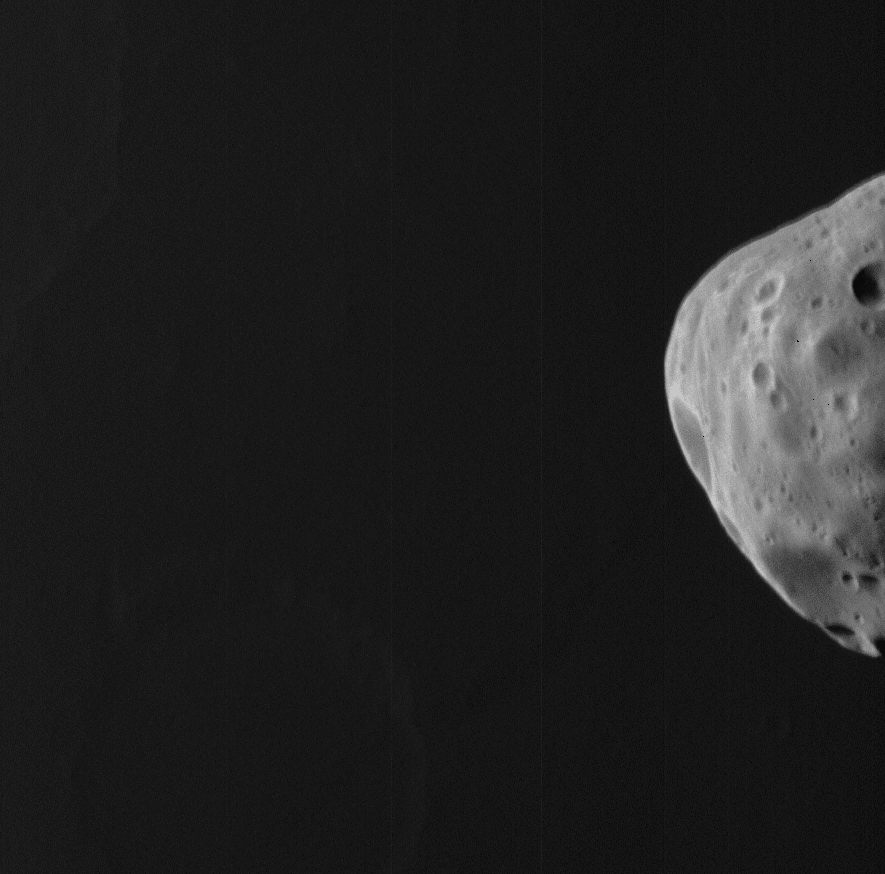Emily Lakdawalla • Oct 03, 2013
Super cool Phobos and Deimos animations from Mars Express
I've been delving in to the Mars Express image archive this week, checking out its images of Phobos, and found a couple of really cool time-series of images to assemble into animations. They are a little blurry because of the camera used to capture them -- I'll explain that in a moment -- but first, enjoy the views.
Here is one of Phobos traversing some cratered Mars terrain. Phobos is actually much darker than Mars; so we must be seeing it crossing Mars at local sunset or sunrise, with Sunlight barely creeping across the dusky landscape.

This next one is even more awesome. I didn't notice it when I was looking for Phobos images, because according to the metadata it was targeted at Deimos. Yes, Deimos is here, a tiny little crescent; but then Phobos comes by, too. It's the second time Mars Express has captured such a mutual event on camera, but I've never seen a crescent-phase one like this. Except, of course, from Cassini, looking at mutual events of Saturn's lumpy little moons. So awesome.

This animation was particularly fun to assemble because of the funny way that the raw images make the moons appear to bob up and down. That's an artifact of Mars Express' motion -- it's executing periodic tiny turns to maintain pointing centered close to Deimos -- but it's a funny effect. You have to remember that Mars Express' cameras are designed for a very orderly, predictable kind of imaging pointed downward at a planet that is supposed to be below it at all times. Attempting to catch motions of other things orbiting Mars is very much an off-label use.

OK, now to explain why they're blurry. I did that in a blog post I wrote in 2009 about Mars Express' other mutual-event animation of Phobos and Deimos; I'll include its full text below for comparison to the 2012 images.

Support our core enterprises
Your support powers our mission to explore worlds, find life, and defend Earth. You make all the difference when you make a gift. Give today!
Donate

 Explore Worlds
Explore Worlds Find Life
Find Life Defend Earth
Defend Earth

